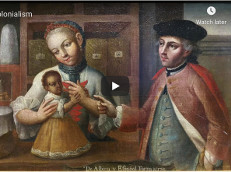I really enjoyed the readings this week, in particular I found Catalina de Erauso’s diary particularly engaging and surprising with it reading like a soap opera at times!
What struck me most about Catalina’s story was that she received no punishment when her identity was revealed but instead was honoured by both the Pope and the King. I found this so surprising as even in Europe today queer people are not always accepted by the Catholic Church – in Italy gay marriage is not legal due to the Catholic Church’s controversial influence over the country’s politics. The fact that she was so readily accepted would perhaps suggest that the Church and the King were not aware of her sexuality but only saw her as a woman who had dressed as a man for the sole purpose of serving her country and not as a way of expressing her own gender identity.
Furthermore, I was surprised that the highest powers at the time, the State and the Church, both recognised that a woman was capable of doing a “man’s” job to a high level. I had believed that the wide spread notion of women being capable of “men’s” work only came into fruition during World War One when women were forced to step into these types of jobs so it was interesting to see how in the patriarchal society of the time Catalina wasn’t criticised for her actions but praised for them.
The Casta Paintings also intrigued me as I would have presumed they would have written down this social hierarchy as a numbered list and not in the form of a painting. However, I can see how a painting may be more effective in portraying the nuances of this hierarchy with each category being dressed in different clothes and with a different background. In one notable example those with “purer” blood were depicted as closer to God.
I also noticed that some of the paintings differed on a “definition” for each of the groups with some paintings showing very different images for the same group. This would perhaps suggest that this was not a ‘clear-cut’ matter and that the lines between groups were very blurred, especially given that many people at the time managed to pass as another group.
Discussion questions
Can you think of any historical figures like Catalina that defied the gender norms of the time?
Do governments use a figurative Casta Painting to categorize citizens into a hierarchy today?

